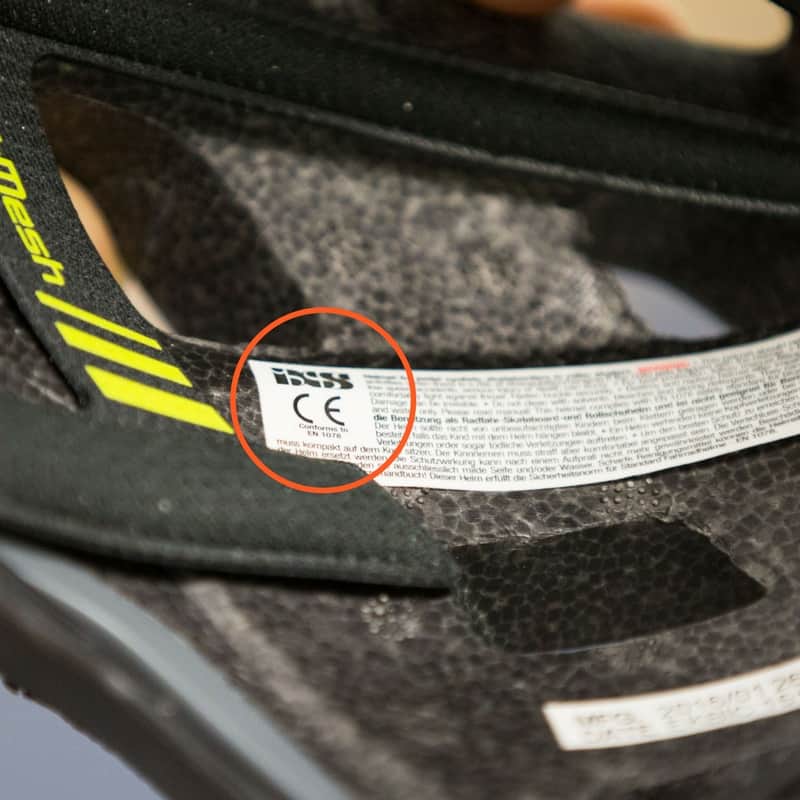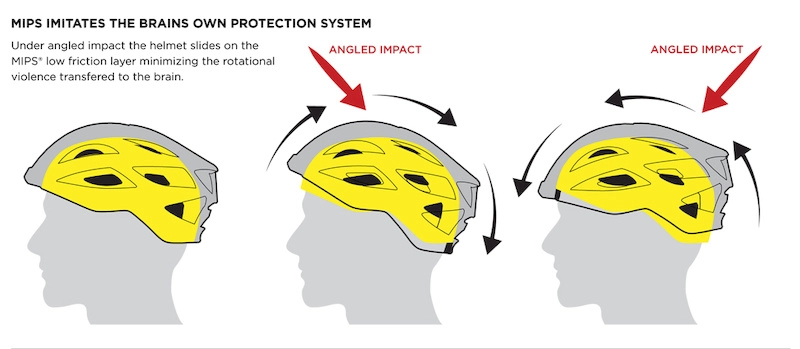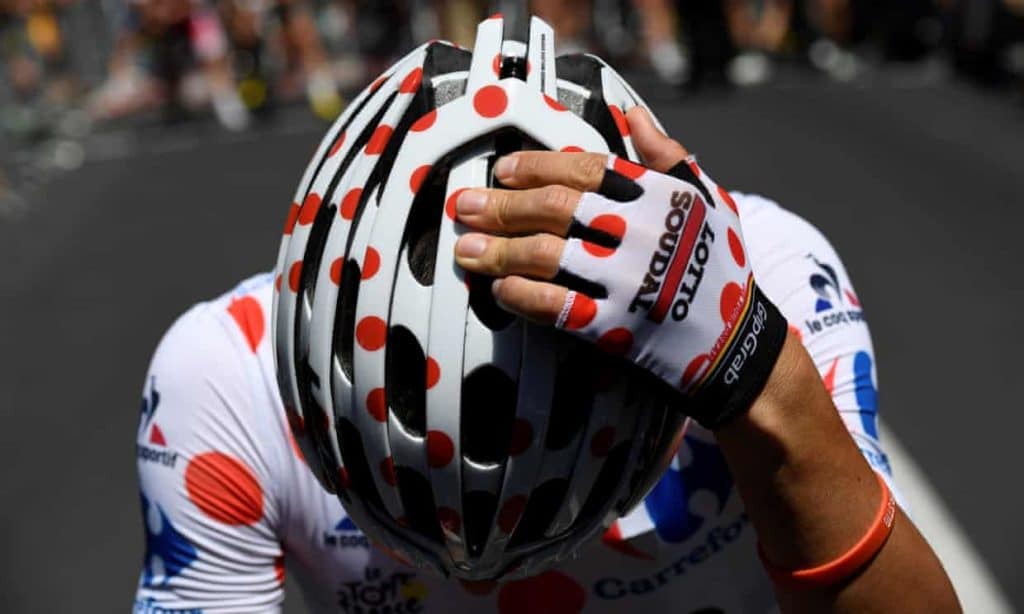A well-fitted helmet is crucial for every cyclist, whether you’re a beginner, experienced, or professional cyclist.
In this article, I’ll guide you through choosing the ideal bike helmet for yourself. I’ll discuss all the important aspects of a good helmet and how it should fit your head based on my personal experience speaking to industry professionals and other cyclists.
Key takeaways
Choosing the right bicycle helmet involves several key steps.
- Understand the types of helmets. Each type of bicycle helmet is designed for a specific cycling discipline (eg: road, off-road, urban, etc). Decide which type best suits your cycling needs.
- Prioritize fit and comfort. Test various helmets by trying them on to ensure a comfortable fit. The helmet shell should be stable and comfortable, touching the head from front to back without any pressure points.
- Determine your helmet size: Helmets typically come in Small, Medium, and Large sizes, with some brands also offering X-Large. Each brand has slightly different sizing, so it’s essential to measure your head circumference and compare against the brand’s sizing chart.
- Check for safety standards and certifications. Ensure the helmet you’re considering meets the required safety standards such as CPSC / CPSC 1203 for the United States, EN-1078 / CE EN 1078 for Europe, or AS/NZS 2063:2008 for Australia and New Zealand.
- Consider helmet safety technologies. Modern helmets may feature safety technologies like MIPS, SPIN, or WaveCel. These technologies can provide additional protection by reducing rotational forces during an impact.
- Evaluate helmet ventilation. Consider the number and size of vents in the helmet, especially if you plan to ride in hot and humid conditions. The more vents a helmet has, the more ventilation it will provide.
- Have a budget. Helmet prices vary significantly based on brand, weight, safety technologies, and color.
Types of bicycle helmets

Each helmet type is designed for a specific cycling discipline. Subtle design differences between each type influence their utility and performance. However, nothing stops you from using one helmet for all types of cycling.
- Road bike helmets are meant as all-rounder helmets. They’re designed with comfort and ventilation in mind. The majority of road cyclists will be wearing this type.
- Aero helmets are similar to road bike helmets but with lesser vents (hence less ventilation). Some cyclists prefer aero helmets to have a slight aerodynamic gain on the flats.
- Time trial or TT helmets are the most aerodynamic helmets. They’ve no air vents and are used in time trials or triathlon races where the course is flat.
- Commuter helmets are also called urban or city helmets, where they’re stylish and blend with casual clothing.
- Mountain biking helmets have a front visor to keep the branches away from the eyes. They’re beefier on the back and sides and are heavier.
Helmet fit and comfort
The most important thing about choosing a helmet is the fit and comfort. In my opinion, this is a non-negotiable. Some cyclists give more importance to design and style, but if it doesn’t fit comfortably, there’s no point in having the best-looking helmet.
Try out the helmet at the shop before buying. Don’t limit yourself to a particular brand and model. Try as many as possible to get a feel of a comfortable fit.
You can also borrow from your friend to try out the fit if they own one that interests you.
Here are some guidelines on how a helmet should fit.
- The helmet shell is stable and comfortable, touching the head from front to back. There shouldn’t be any pressure points around the head.
- The front rim is about one to two fingers in width above your eyebrows when the helmet is placed level.
- The front rim is not impeding your vision.
- The side Y straps don’t get in the way of your ears.
- The adjustable chin straps don’t get in the way when you open your mouth.
- The retention dial should have enough room for tightening.
Helmet sizing
Helmets come in three sizes; Small, Medium, and Large.
Some models have X-Large size, but that’s very rare. Each brand has slightly different sizing, and you might not fit the same size across different brands.
If you fall in between sizes, it’s recommended to size down. Alternatively, if you wear a cycling cap beneath the helmet, you might consider sizing up instead.
The table below shows the helmet sizing for some of the leading bike helmet brands.
| Brand | Small | Medium | Large |
|---|---|---|---|
| Kask | 50 – 56cm | 52 – 58cm | 59 – 62cm |
| Giro | 51 – 55cm | 55 – 59cm | 59 – 63cm |
| POC | 50 – 56cm | 54 – 59cm | 56 – 61cn |
| Lazer | 52 – 56cm | 55 – 59cm | 58 – 61cm |
| MET | 52 – 56cm | 56 – 58cm | 58 – 61cm |
More reading : How to Wear A Bicycle Helmet Correctly
Helmet certifications and standards

Bike helmets today undergo a lot of testing before they’re made available publicly. It’s very important to choose a helmet with a valid certification as it ensures that the manufacturers have met the minimum safety requirements.
Depending on your location, your bike helmet can come with either of these certifications.
- CPSC / CPSC 1203 (Consumer Product Safety Commission) is a United States standard. All helmets imported and manufactured in the United States after 1999 must comply with the mandatory federal safety standards.
- EN-1078 / CE EN 1078 is a European standard created in 1997. All helmets sold in Europe must meet (or exceed) these standards.
- AS/NZS 2063:2008 is an Australia and New Zealand standard with stricter testing requirements than CPSC and CE. Because of this, a similar helmet model with AS/NZS sticker is generally heavier than its CPCS/CE version.
More reading : Helmet Safety Certifications Explained
Helmet safety technologies

Safety has improved tremendously in the past decade, especially with the introduction of various breakthrough technologies. Most bike helmets today come with either one of these technologies.
- MIPS, or Multi-directional Impact Protection System is the most common safety technology in bike helmets today. It was developed by the Royal Institute of Technology in Sweden. The yellow MIPS liners inside the helmet will slip against each other during impact to help reduce the rotational forces contributing to concussion and, worse, brain injury. MIPS
- SPIN, or Shearing Pads INside won the German Design and Innovation Award in 2018. Silicone bladders are inserted into the helmet pads, which absorb and dissipate the rotational forces upon impact. SPIN can be found only in POC helmets with blue padding.
- WaveCel was developed by Bontrager and launched in 2019. It’s based on the concept that the WaveCel cellular material will flex, crumple or glide to absorb the forces upon impact. WaveCel is exclusive to Bontrager helmets and can be easily recognized with the lime green interior.
Even though bicycle helmets today come with advanced safety features, it’s important to replace them in the event of a crash. The helmet will take most of the brunt, and sometimes the damage isn’t visible.
More reading : Should You Get A Helmet with MIPS?
Helmet breathability and ventilation

Ventilation is one of the overlooked aspects of choosing a helmet. Most helmets today have 10 to 30 air vents depending on the design. All-rounder helmets have more vents, while aero helmets have fewer.
If you ride in cooler temperatures, you can get away with fewer air vents. But when it comes to hot and humid conditions, the more air vents, the better.
Besides the number of vents, pay attention to the vent size too.
Price range
Road bike helmets can cost anywhere from $50 to $200 today. Various factors, such as brand, weight, safety technologies, and even colors, affect the pricing.
Here are some of my general observations when it comes to pricing.
- The lighter the helmet, the more it’ll cost.
- Helmets with MIPS can cost around 10 to 20% more than non-MIPS versions (if available).
- White helmets are in higher demand and can cost more than other colors, such as yellow or green.
More reading :

Alex Lee is the founder and editor-at-large of Mr. Mamil. Coming from a professional engineering background, he breaks down technical cycling nuances into an easy-to-understand and digestible format here.
He has been riding road bikes actively for the past 12 years and started racing competitively in the senior category during the summer recently.